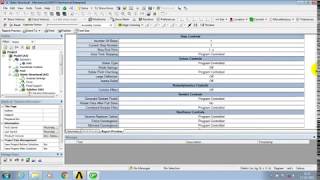How to Generate a Report in ANSYS

Generating a report in ANSYS is a crucial aspect of the simulation process, as it allows engineers and analysts to document and communicate simulation results, findings, and methodologies effectively. ANSYS provides several tools and options for creating comprehensive reports that include simulation setup details, numerical results, visualizations, and interpretations. This guide will walk through the step-by-step process of generating a report in ANSYS, covering the essential components, customization options, best practices, and considerations.
Table of Contents
- Introduction to Generating Reports in ANSYS
- Setting Up for Report Generation
- Creating a Report in ANSYS Mechanical
- Including Results and Visualizations
- Customizing the Report Layout
- Exporting and Sharing the Report
- Best Practices for Effective Reporting
- Advanced Report Customization Techniques
- Troubleshooting Common Issues
- Conclusion
1. Introduction to Generating Reports in ANSYS
Generating reports in ANSYS is a pivotal step in documenting simulation projects, ensuring clarity in presenting results, and facilitating collaboration among team members and stakeholders. A well-structured report not only summarizes the simulation process and outcomes but also provides insights for decision-making and future design iterations.
2. Setting Up for Report Generation
Before creating a report in ANSYS, it’s essential to ensure that your simulation setup is complete and that all necessary results have been obtained. Here are some preparatory steps:
- Complete Simulation Setup: Ensure that your simulation setup in ANSYS Workbench or ANSYS Mechanical is finalized, including geometry, mesh, boundary conditions, material properties, and solver settings.
- Verify Results: Run the simulation to obtain the desired results such as displacements, stresses, temperatures, flow velocities, or electromagnetic fields.
3. Creating a Report in ANSYS Mechanical
ANSYS Mechanical provides built-in functionalities for generating reports directly from the simulation environment. Follow these steps to create a report:
- Navigate to Reports: In ANSYS Mechanical, go to the “Solution” branch in the Outline tree on the left-hand side.
- Generate Report: Right-click on the “Solution Information” item and select “Create Report.”
- Report Setup: Follow the prompts to set up the report parameters, including what aspects of the simulation (e.g., model setup, results, graphs) to include.
4. Including Results and Visualizations
Incorporate relevant results and visualizations into your ANSYS report to convey key findings effectively:
- Tables and Charts: Include tables and charts showing numerical results, convergence criteria, and performance metrics.
- Plots and Graphs: Embed plots and graphs depicting stress distributions, temperature contours, displacement vectors, or any other relevant field data.
- Images and Animations: Attach images or animations that illustrate critical simulation phases, deformations, or flow patterns.
5. Customizing the Report Layout
Customize the layout and structure of your ANSYS report to enhance readability and clarity:
- Section Organization: Structure the report into sections such as Introduction, Methodology, Results, Discussion, and Conclusion.
- Text and Annotations: Add descriptive text, annotations, and captions to explain simulation setups, assumptions, and interpretation of results.
- Formatting Options: Utilize formatting options for text (font size, style), headings, bullet points, and numbering to improve document structure.
6. Exporting and Sharing the Report
Once the ANSYS report is complete, export it in preferred formats for sharing and distribution:
- Export Formats: ANSYS allows exporting reports in various formats such as PDF, Microsoft Word, HTML, or plain text.
- File Management: Manage exported files and ensure compatibility with recipients’ software and viewing preferences.
7. Best Practices for Effective Reporting
To create effective and impactful reports in ANSYS, consider these best practices:
- Clarity and Conciseness: Clearly articulate simulation objectives, methodologies, and results without unnecessary technical jargon.
- Visualization: Use visual aids like graphs, charts, and images to illustrate complex concepts and findings.
- Consistency: Maintain a consistent format, style, and tone throughout the report to enhance readability and professionalism.
8. Advanced Report Customization Techniques
Explore advanced techniques to customize ANSYS reports further:
- Scripting and Macros: Use scripting languages (e.g., Python, VBScript) or ANSYS macros to automate report generation tasks or customize report layouts.
- Template Creation: Develop custom report templates with predefined sections, layouts, and styles for consistent report formatting.
9. Troubleshooting Common Issues
Address common issues encountered during report generation in ANSYS:
- Formatting Errors: Resolve formatting discrepancies or alignment issues within the report document.
- Content Completeness: Ensure all required simulation details, results, and interpretations are included in the report.
10. Conclusion
Generating reports in ANSYS is an essential skill for engineers and analysts to effectively communicate simulation results and insights. By following the steps outlined in this guide and adhering to best practices, users can create informative, well-organized reports that support informed decision-making, enhance project collaboration, and demonstrate the value of simulation-driven engineering in achieving design objectives. ANSYS’s robust reporting capabilities empower users to document simulations comprehensively and present findings with clarity and professionalism, contributing to the success of engineering projects across various industries.




